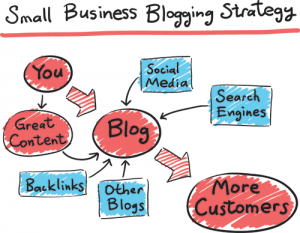There’s a sad truth about new businesses—most of them fail. According to Neil Patel writing for Forbes, about 90% of all business startups fail within the first two years. Some fail because their products and services don’t match marketplace needs. Others fail because of slow growth and the inability to secure funding. For most failed startups, however, the problem is the lack of a sound business plan.
Every Smart Idea Needs a Plan to Succeed

You wouldn’t buy a new house, or a new car, without a plan. In fact, there’s really no important decision—from marriage to starting a family to obtaining a new job—you would make without doing some research and anticipating potential problems down the road. A new business is no different—to succeed, you need a sound business plan.
If you’ve never pulled together a business plan, there are plenty of people and organizations who can help. One is the U.S. Small Business Administration (SBA). While every business plan is different, they all have certain features in common.
[bctt tweet=”If you fail to plan, you plan to fail.” username=”DesignQuote”]
Here are the SBA’s recommendations for the 8 components of a smart business plan:
1. The Executive Summary
The executive summary is perhaps the most important part of your plan—especially if you’re trying to lure investors. The summary tells potential investors clearly and concisely what your primary objectives are, and explains why your new business will be successful. If your business is already established, the executive summary should include your mission statement, how old your business is, how many employees you have, your products and services, how much your business has grown over the years, and your plans for the future. If you’re a startup business, demonstrate that you’ve completed a thorough market analysis, and that the products you offer fill a current consumer need.
2. Company Description
This is similar to an “elevator pitch” which summarizes your goals and your unique selling proposition. You should include what marketplace needs your products and services will satisfy, what consumers you’ll serve, and how your business will serve those needs better than your competitors.

3. Market Analysis
In this section, you should describe current trends in your industry, the demographic characteristics of your target market, and potential growth in that market. You should also include, based on your research, what share of that market you believe you can capture, as well as how you will price your products (and how this compares with your competition). Finally, present a competitor analysis, with your company’s strengths and weaknesses relative to your main competitors.
4. Organization and Management
This should include your organizational structure, details about ownership and profiles of your management team, including specifically what role each will play in your business and a summary of their backgrounds and qualifications.
The best way to describe your organizational structure is to include an organizational chart along with a narrative description. It’s critically important for investors to see that you’ve thought carefully about who will do what in your new business, and that each role is accurately defined so there’s no overlap and nothing is left to chance.
Ownership information is equally important. It describes your legal structure—for example, will your business be incorporated and, if so, will it be a C or an S corporation? Will it be a partnership or an LLC? If so, is it a general or a limited partnership? Be sure to include the names of all owners, what percentage of the business each owns, and the forms of ownership (such as common stock, preferred stock, general partner and limited partner).
5. Products and Services
What are the benefits of the products or services your business will offer? Make sure you explain this from your customers’ point of view, not yours. How are your products or services superior to those offered by your competitors? This is also the section of your plan where you list any current or pending copyrights and patents.

6. Marketing and Sales
It’s not enough to have great products or services—you also need to have a solid plan to market and sell them. Describe your overarching marketing strategy—how, specifically, will you market your products and services? Will you employ advertising, public relations, a website, printed materials, or TV and radio ads? You also need to present your sales strategy, including how many salespeople you plan to employ and how many leads each member of your sales team can reasonably handle over a specific period of time. Explore some tips for creating great headlines.
7. Funding Request
If you need funding, such as a small business loan or venture capital, include a funding request section in your plan. Outline how much money you need now and in the future (preferably over the next five years), as well as specifically how you’ll use that money (for example, is it for capital expenditures, acquisitions, or working capital?).
8. Financial Projections
This section includes several financial statements. If you already own your business, include historical financial data for the past five years (such as income statements, balance sheets and cash flow statements). Both established businesses and startups should include prospective financial data which show how you expect your business to perform over the next five years. If you’ve included a funding request, make sure your projection figures match the figures in your funding request.

Conclusion
Having a sound and realistic business plan will exponentially increase your chances of beating the odds and achieving success. So will an attractive website that attracts new customers, does what it’s supposed to do, and grows along with your business. To find the perfect designer for your website, one who will take the time to understand your business and create a professional site that meets your needs, contact us today.

